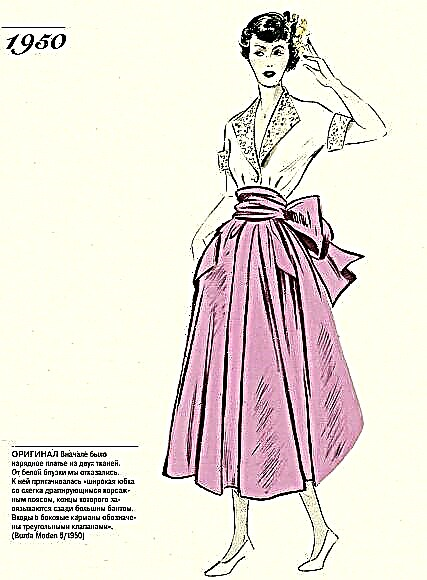From simple to the most extraordinary - there are different ways to place and decorate plants in the house.
1. The simplest planter from the cord

umbra.com
Such a pot is easy to build in five minutes from 6 pieces of cord. Take a cotton cord, not a synthetic one: this way the planter will not slip. And staying in it would be better for a wide pot.
How to create comfort at home: 10 easy ways
2. Planter with round stand

abeautifulmess.com
A more stable version of the hanging cache-pot made of cords is with a bottom made of a wooden kitchen stand for hot dishes. For fidelity, the cord from the bottom can be attached to the stand with a stapler or glued.
What is raffia and what can be made of it?
3. Cache-pot made of old jeans


hometalk.com
It looks like you can make anything out of old jeans - well, almost anything. Here, for example, is a planter knitted with a thick crochet of strips of fabric cut from a pair of jeans that have served their pair.
What to make of old jeans: 19 great ideas
4. Sack pot


ohohdeco.com
For such a planter, you need to sew a simple bag, leaving holes in the corners below - a cord will be threaded into them, for which the planter can be hung. A good way to recycle, for example, shreds of fabric left over from sewing covers on decorative pillows.
DIY laundry baskets: workshops + ideas
5. The cache-pot sewn from plaits of fabric




abeautifulmess.com
Three flowerpots in the photo look different, but are made on the same principle. Flaps of fabric are cut into strips, twisted into bundles and then sewn together with coarse threads. The appearance of the pots will depend on the color / texture of the fabric and threads, and on the thickness of the bundles. From a thicker fabric and bulky tows, a cache-pot of a more brutal appearance is obtained.
Ideas for storage - interior baskets: 5 workshops
6. Succulents in the cell

garden.org
For this original method of growing succulents, you need a small decorative bird cage. Sphagnum moss soaked in water and a little soil are placed in the cage, and plants are planted. After a while, when the succulents take root, they will grow through the bars, creating a beautiful composition.
Happiness Trees: Home Topiary
7. Pots of thread

design-milk.com
A simple but surprisingly unusual option: pots of thread! As soil, sphagnum moss is used, which wraps the roots of the plant. Then carefully wrap the structure with threads. To water the moss in such a pot, you must carefully moisten it with water from a watering can or spray bottle.
String art - paintings of nails and threads: what is it and how to learn it
8. Coconut shell pot


poppytalk.com
Half of the coconut shell must be cleaned of fibers, drilled holes for the cord and, if desired, painted. In such a pot, you can plant a small plant, for example, the same succulent.
DIY candles: a master class and 12 ideas
9. Water plants in jars

themerrythought.com
Why not plant aquatic plants in mini aquariums? This role may well playbeautiful jars or small bottles. They must be washed properly, put on elastic neck elastic bands to which to tie the cord - for it, "aquariums" will be suspended. Place pebbles inside, pour water and plant small plants.
What to make from shells: 7 unusual ideas
10. Mini pots with magnets

ohohdeco.com
Or even micro-pots - they are so small! They can be cut out of cork or wood, and a magnet can be glued on one side to attach, for example, to a magnetic board.
10 ways unusual use of a magnet + video with "magnetic life hacks"
11. A pot from plastic bottles



almostmakesperfect.com
Looking at these exquisite flower pots, you can hardly guess that they are made from shampoo bottles. Bottles should be cut obliquely, removed from them stickers (if pictures and inscriptions are applied directly to the bottle, it can be sanded with a fine emery cloth and painted with acrylic), punch holes and pick up a beautiful cord.
Do it yourself ... wicker planters
12. Pots upside down


designsponge.com
And how do you like this option: pots turned upside down? Plant growers who have tried this method claim that orchids and their relatives feel best in pots "upside down", because these flowers often grow head down in nature. The pot can be made of a plastic or tin can without forgetting the top for irrigation, and the bottom with a hole with a hole through which the flower will grow, but the earth will not spill out.



